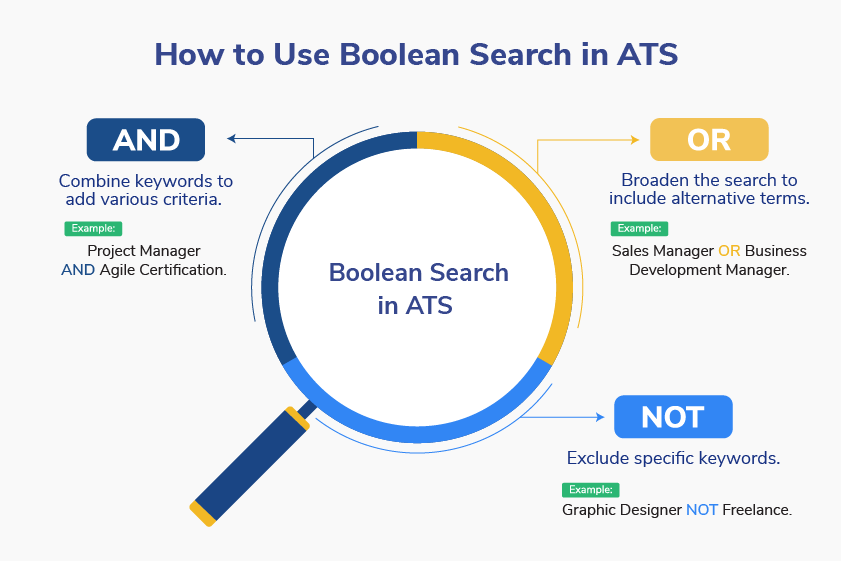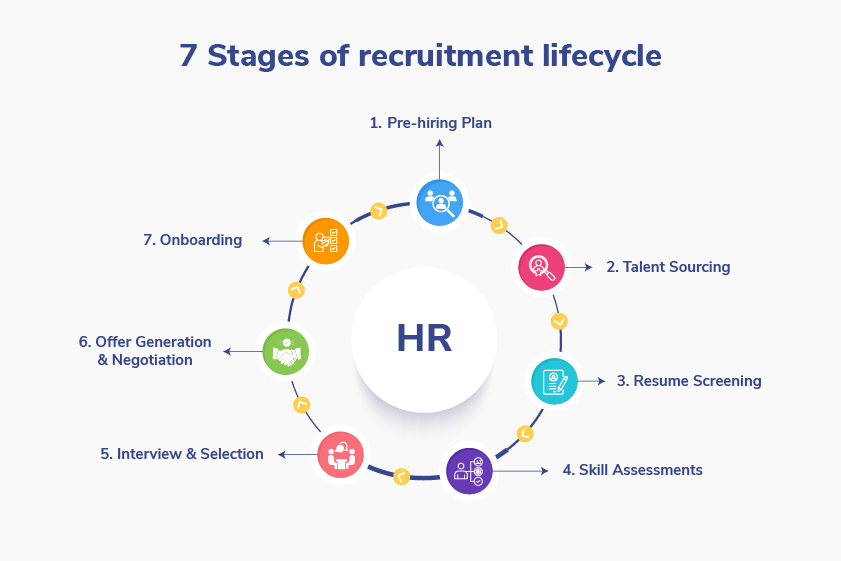Every organisation desire to fill in jobs with highly talented candidates in all available positions. However, hiring the right talent from a pool of applicants can be time-consuming and stressful when the hiring process is not optimised efficiently. The Times states that an average corporate job posting attracts 250 candidates. From screening thousands of available resumes to shortlisting a few and conducting multiple levels of interviews to filter out the best, an HR’s task is not that simple. Even after proceeding with all these phases of talent acquisition, HR must convince candidates who hold multiple offers in hand. This is why many talent management teams endeavour to incorporate automation and technology in the hiring process. For those frustrated and exhausted HR teams, applicant tracking systems (ATS) are a game-changer. Here are a few tips to improve hiring with ATS (Applicant Tracking Systems).
Table of Contents
Applicant Tracking System (ATS) – Overview
An applicant tracking system (ATS) simplifies and streamlines recruitment by automating job posting, resume screening, interview scheduling, and candidate follow-up. Businesses should know how to use the ATS effectively. Otherwise, this advanced technology can make hiring even more complex. Below are six actionable tips to improve hiring with ATS.
1. Provide Precise Job Descriptions
Job descriptions (JDs) are candidates’ first interaction with the company. A well-drafted JD attracts the right talent while filtering out unqualified candidates. An ATS allows recruiters to create and post job descriptions on multiple job portals effortlessly, so making the JD stand out is essential.
Why It Matters:
A clear job description specifying the essential skills and qualifications will help candidates understand what a company looks for in them. This will reduce the number of applications received, as individuals will not apply for jobs for which they are not suitable.
For instance, a job description for hiring a digital marketer can include skills like SEO, SEM, content creation, and graphic design. It is also essential for the HRs to consider whether the candidates have experience in B2B or B2C marketing, as the strategies vary.
Tip for Using an ATS:
- Many ATS platforms allow you to include keywords and skills in the job posting.
- Use relevant keywords that align with the desired qualifications to make the search process easier.
- The ATS will automatically prioritise candidates whose resumes match the skills in your job description.
2. Avoid Lengthy Application Forms
It is important to obtain as much information from the candidate as possible, but not through lengthy application forms. Candidates might find it complex and monotonous to furnish details in those long forms.
Why It Matters:
92% of job seekers exit online job applications before completion!
Source : SHRM
Top talent is in high demand. Lengthy application processes can frustrate candidates, leading them to abandon the application halfway through. Simplify the application form and ask for only the most essential information upfront to ensure a higher completion rate.
Tip for Using an ATS:
- Customise application forms to keep them short and to the point.
- Include basic details like name, contact information, and resume uploads while avoiding unnecessary questions.
- Later stages of the hiring process can be used to gather more detailed information from shortlisted candidates.
3. Enable Autofill for Easier Applications
When employees fill out the applications, an autofill feature can help them remove redundant details like name, education, and other personal/professional details.
Why It Matters:
Entering such details can be tedious and time-consuming. Autofill allows applicants to finish the application process quickly. Candidates can add basic details using their resumes or profiles on networking platforms like LinkedIn.
Tip for Using an ATS:
- Most modern ATS platforms offer autofill functionalities that pull data directly from uploaded resumes or third-party integrations.
- Enabling this feature makes the process seamless for candidates and reduces the likelihood of incomplete applications.
- A positive candidate experience can boost the company’s reputation as a candidate-friendly organisation.
4. Use Boolean Search for Better Results
Boolean search is one of ATS’s powerful features. It allows talent managers to specify keywords and qualifiers to find relevant candidate profiles.

Why It Matters:
A Boolean search helps you narrow down candidates based on critical factors such as experience, location, and skills. Recruiters can refine the search to pinpoint the best-suited profile for the role using AND, OR, or NOT operators.
Tip for Using an ATS:
- Familiarise with ATS’s search functions and experiment with Boolean operators.
- Use this feature to save time, especially when dealing with a large pool of applicants.
5. Replicate Your Hiring Workflow in the ATS
Every organisation’s hiring workflow is unique, from resume sourcing and parsing to conducting interviews. An ATS helps HR teams customise workflows and automate repetitive tasks to replicate the firm’s hiring process exactly.
Why It Matters:
A standardised workflow ensures consistency across all stages of recruitment, enabling your team to manage the process efficiently.

Tip for Using an ATS:
Take advantage of automation features in your ATS to move candidates seamlessly through each hiring stage. For example:
- Automatically notify candidates when they advance to the next stage.
- Set up interview reminders for recruiters and hiring managers.
- Generate offer letters with pre-built templates.
Automation reduces manual effort and speeds up the overall hiring process, making it stress-free for everyone involved.
6. Ask the Right Questions
Finding the right candidate is more than just qualifications and skills; it’s also about cultural fit and critical thinking abilities. By including targeted questions in the application process, you can gain deeper insights into a candidate’s suitability for the role.
Why It Matters:
Behavioural and critical-thinking questions help recruiters assess how candidates approach challenges, make decisions, and adapt to different situations. For example:
Critical Thinking Question: “Describe a challenging situation in a project and how you resolved it?”
Behavioural Question: “Tell us about any conflicts you face in the work environment and how you handled them.”
Tip for Using an ATS:
- Leverage your ATS to incorporate pre-screening questions during the application process.
- Many ATS platforms allow you to add questions with multiple-choice or open-ended formats
- Use the ATS to scores to identify top-performing candidates
Wrapping Up
An Applicant Tracking System (ATS) can transform your hiring process, making it smooth, stress-free, and highly efficient. With the right strategies in place, an ATS saves valuable time and ensures that the organisation attracts, engages, and hires the best talent for your organisation. By improving the candidate experience and automating tedious tasks, teams can focus on building meaningful connections and making data-driven hiring decisions.
In today’s competitive job market, a streamlined hiring process gives you an edge. So, embrace the power of technology and follow these tips to improve hiring with ATS!

